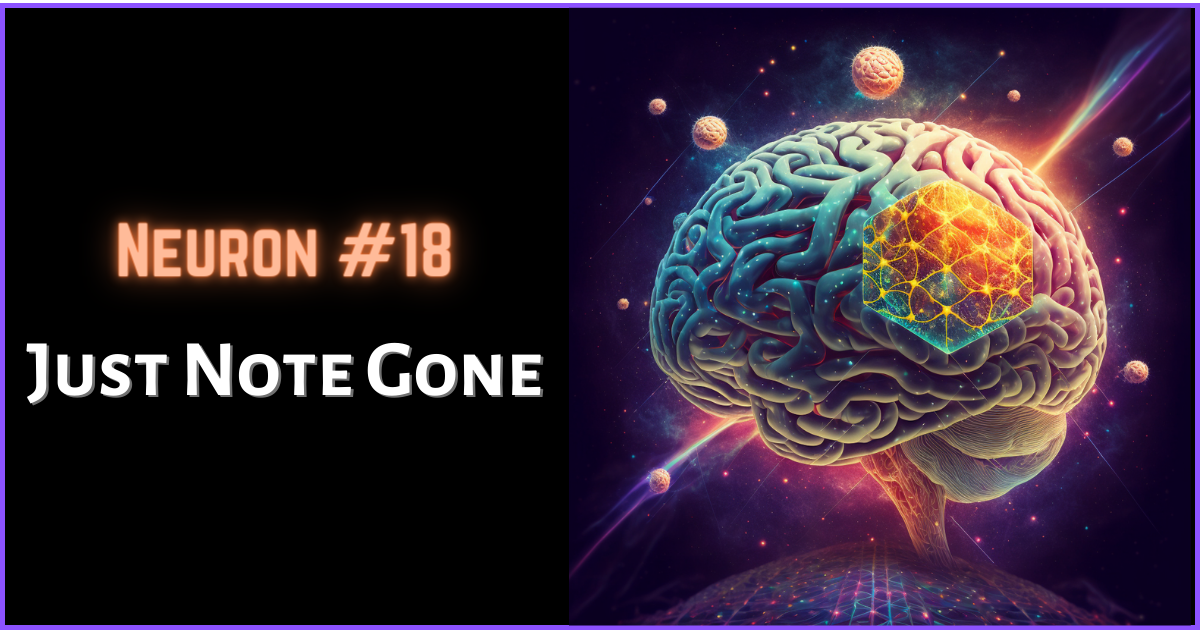- The Trippy Report
- Posts
- Trippy Report #3: Myth
Trippy Report #3: Myth
What myth is guiding your life?
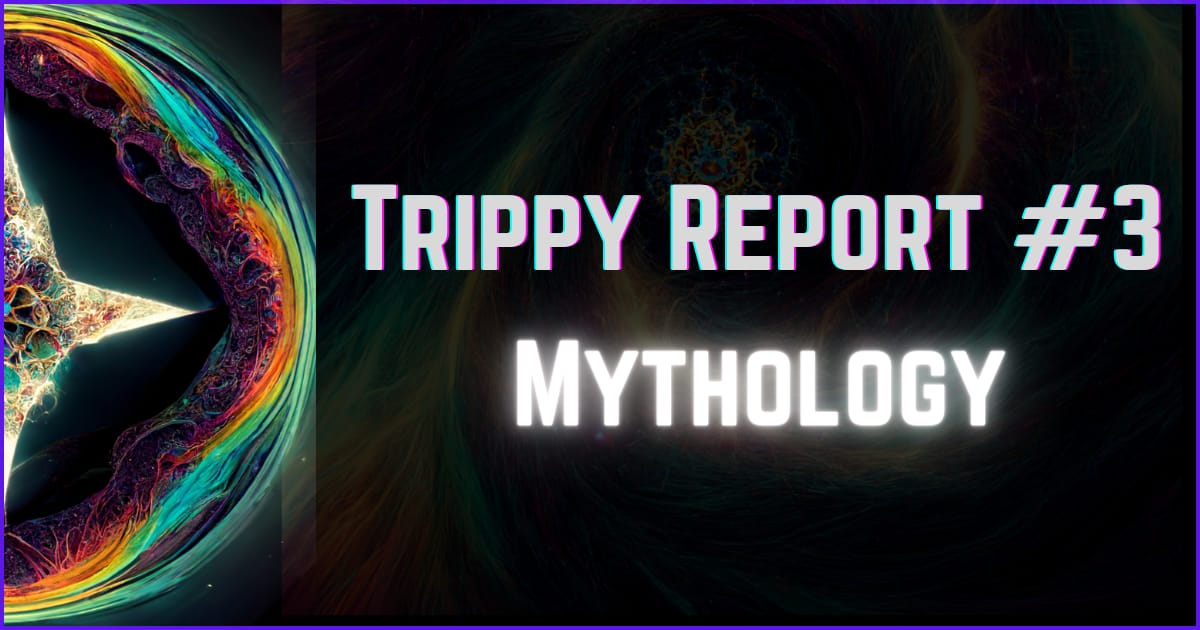
TL;DR
Just read the damn thing. Make sure to arrange a babysitter though, this ain’t your quick doomscroll dopamine hit.
The Woman and The Web
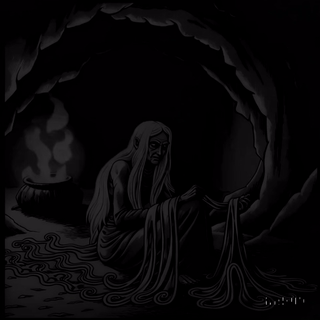
Yup, kinda went down like dat.
Deep inside of a cave, where the light and shadows play, a wise old woman spends her days weaving a beautiful garment.
Contrary to society, she is unaffected by the hustle and bustle of modern daily life.
The old woman is a visionary, and she sees life in ways that others do not.
Case and point, she weaves porcupine quills into her garment for a dash of elegance, demonstrating how something piercing could also be fundamentally beautiful.
To do this, she flattens each quill with her teeth, which, over the years, have been worn down into nubs that barely rise above her gums. Nevertheless, she keeps on biting, and she keeps on weaving. The beauty is worth the sacrifice to her.
The only time this wise woman stops weaving is when she walks her frail old body to the back of the cave.
Why? There is a soup simmering in a great cauldron over a fire. The woman knows nothing older than this fire, and nothing more important than this soup.
Within the stew is all the seeds and roots that will ultimately blanket the Earth, sprout from the soil, and nourish all of life. If the old woman didn’t periodically stop weaving and go stir the ancient stew, the fire would scorch the ingredients. And that would result in grave consequences for the planet.
That’s why the old woman carefully divides her time. She knows when to weave beauty versus when to stir things up.
Every time she heeds the call to stir the soup, she must leave her garment on the ground and meander slowly to the back of the cave.
But the garment is vulnerable because a mysterious black dog also resides in this cavernous abode.
This canine has lived there as long as the woman has, and it awakens whenever the woman walks back to the soup. And once she begins stirring, the black dog scampers over to her exposed garment, bites a loose thread, and pulls on it until the beautiful garment completely unravels. It only takes a single tug by the black dog to undo the wise woman’s creation.
When the old woman returns to her garment, she is arrested at the sight of the chaos. Her work of beauty has been destroyed. She has nothing left to show, except her ground down teeth and the distorted threads of her once-beautiful creation.
After staring at the mess for a while, she sits back down and picks up a loose thread. As she holds chaos in her hands, a new and greater vision comes to her. So, she releases the vision of her previous garment, and now puts her hands and teeth in service of a new design—which she knows will soon be the most beautiful garment the world has ever seen.
What Mythology Isn’t
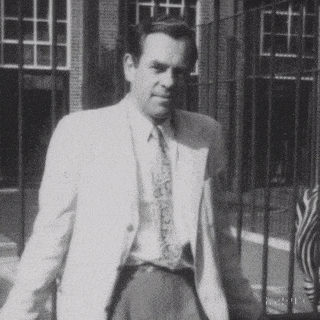
Joseph Campbeezy live in the flesh
What is the meaning of the story of the wise old woman?
Before we dive into that rabbit hole, let’s talk briefly about what myth is and what myth is not.
According to author Joseph Campbell, “A myth is something that never happened, but is happening all the time.”
How? Let’s peer into the infinite questions and lessons that this story offers.
What work of art are you weaving?
Who or what is the black dog that turns order into chaos when you turn your back?
Is the black dog a blessing, a curse, or a catalyst of the natural cycle of birth and death?
What is the soup that you stir for the good of all?
When your world falls apart, can you gaze into chaos and envision beauty?
Within every human’s story exists these equivalent symbols and images: a wise old woman, a garment, the porcupine quills, ground-down teeth, a soup to stir, and a black dog with a knack for fucking shit up. And within every human’s mind exists the capacity to restore order and beauty when everything has fallen apart.
Although none of that story with the old woman ever happened, it is happening all the time in real life.
Clearly, the story isn’t something to be taken literally. I presume you don’t dream of sitting in a cave with a black dog, and dividing your time between knitting, biting, and stirring.
And you don’t need to actually visit that cave with your body. Instead, a myth is a territory to visit in your mind, where you can glean practical lessons for daily existence.
A myth is not something that is false. Contrary to once-popular TV shows like Mythbusters, a myth is not about testing a hypothesis. That is called the scientific process, not a myth.
A myth is not a story about an actual event, such as Alexander the Great gloriously marching into battle. He actually lived, and that actually happened. That is called history, not myth. And the funny thing is, according to the legendary mythologist Joseph Campbell, “Myth is much more important and true than history. History is just journalism and you know how reliable that is.” Well said, sir.
Moreover, myth is not the life story of a human that was supposedly far wiser, braver, and nobler than you. That is called a biography, not myth.
Now that we’ve stripped some clothes off of myth, let’s stare at it nakedly…
How else could we define it?
First, let’s lay the groundwork about why a mystical human being, like you, would ever need myth.
What Mythology Is (And Why You Probably Need It)
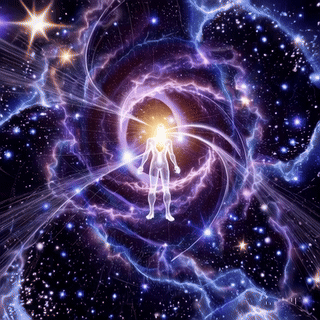
“C'est La Vie” - said a French dude
In storyteller Joseph Campbell’s exceptional book Pathways to Bliss, he quotes a passage from a philosopher named Durkheim.
“We are all manifestations of a mystic power; the power of life, which has shaped all life, and which has shaped us all in our mother’s womb. And this kind of wisdom lives in us, and it represents the force of this power, this energy, pouring into the field of time and space. But it’s a transcendent energy. It’s an energy that comes from a realm beyond our powers of knowledge. And that energy becomes bound in each of us—in this body—to a certain commitment.”
Nobody knows exactly what this power is, why it is, who it is, when it is, how it is, or where it’s from, but it’s been pulsing through your veins since you were seeded in your mother’s womb.
However, somewhere between your helpless infantile years and right now, you may have forgotten about this mystic power.
This has the peculiar effect of rendering you unwell, per Campbell.
“Now, the mind that thinks, the eyes that see, they can become so involved in concepts and local, temporal tasks that we become bound up and don’t let this energy flow through. And then we become sick. The energy is blocked, and we are thrown off center.”
Unfortunately, this is normal in our society, and understandably so. We all need to eat, sleep, and excrete. Make money, find a mate, and wipe our asses. Clean our houses, raise a child, and assert ourselves as “somebody”.
There are bonafide demands of material existence, as well as infinite distractions.
All of which can make us miss the transcendent right before and behind our eyes in our waking lives.
Unfortunately, it just ain’t practical to channel transcendent awe 24/7. If we did, we’d surely step off the curb and get squarely whacked by an oncoming yellow school bus.
Thus, as we “mature”, we often become tranquilized by the trivial, maddened by monotony, and wrapped up in the rat race.
We flat-out forget that we are manifestations of a mystic power.
And how does this affect a storytelling monkey, a.k.a. you, a human being?
Mythic storyteller Michael Meade sums it up beautifully… “cosmological dislocation”.
You don’t know where the fuck you are. Why you are. How you are. Who you are. What you are. When you are.
Luckily, there is only one way out of that maze.
“The psychological problem, the way to keep from becoming blocked,” writes Campbell, “is to make yourself—and here is the phrase—transparent to the transcendent. It’s as easy as that.”
Sounds simple.
But is it that easy?
I can’t promise that.
Nevertheless, I can arm you with the basic knowledge of the functions of myth.
The Four Functions of Mythology

A book that might change your vantage point on existence…
As Joseph Campbell writes in Pathways to Bliss, a mythology serves four fundamental functions: the mystical, the cosmological, the sociological, and the psychological.
Let’s tackle these one by one.
1st Function: Mystical
Take this uppercut on your chin from Ernest Becker’s Pulitzer prize winning book, The Denial of Death.
“Mother Nature is a brutal bitch. Red tooth and claw. Who destroys what she creates.”
It’s a teeth-shattering reality to be a human.
Becker calls it “ludicrous, if it is not monstrous” because we know that we are “food for worms”.
Everywhere you look, life is eating life.
Now, I eat something. Later, something eats me.
Becker continues, “…to have emerged from nothing, to have a name, consciousness of self, deep inner feelings, an excruciating inner yearning for life and self-expression and with all this yet to die. It seems like a hoax… What kind of deity would create such a complex and fancy worm food?”
This reality has been going on for billions of years before you, yet it remains terribly difficult to come to grips with the destructive nature of creation.
Birth is a gift that signs us up for death.
So, after remembering your impending doom, how do you casually slide back into your office chair for your next Zoom call?
Well, that’s the first function of a mythology—the mystical function.
“The impact of this horror on a sensitive consciousness is terrific—this monster which is life.” Campbell asserts. “Life is a horrendous presence, and you wouldn’t be here if it weren’t for that.”
Myth reconciles your mind with this inescapable fact.
Per Joseph, we must affirm this monstrous mystery that is existence “to the root, to the rotten, horrendous base.”
But, there’s a kicker…
It must also be affirmed with gratitude, love, and “recognition of the sweetness.” After all, he says, “Through the bitterness and pain, the primary experience at the core of life is a sweet, wonderful thing.”
So, the invitation from Campbell is complete affirmation of the mystery. Saying “yes” to it all, no matter what. The wonder, terror, sweetness, and horror are a package deal.
Assuming you have the capacity—or mythology—to evoke that sense of affirmative awe, what could possibly be next?
2nd Function: Cosmological
Sure as the sun shines, life will test you.
Your dad died in a car accident and you didn’t get to tell him how much you love him? How is that sweet, wonderful awe feeling now?
Your body is falling apart and you’re watching yourself turn into worm food? Tell me how your mind enjoys being nibbled to death by forces seen and unseen.
You are diagnosed with a chronic disease and losing your identity that you spent a lifetime building? Are you having fun completely affirming that?
The second function of mythology, then, is the cosmological function. The work of myth here is to present a “roundabout image of the cosmos” that maintains your experience of awe in the face of the hungry mystery.
Myth must explain everything that you come into contact with in the universe around you.
Objective truth is not the goal here, although secular science often attempts to hijack your cosmology. ”The universe was created by The Big Bang, and that is the objective truth, as measured by the rate of expansion.” Blah, blah, and more blah.
Nobody fucking knows anything, really.
It could be a valid and reasonable explanation, and perhaps even widely accepted, however, the Big Bang Theory is a still but a story to make sense of nonsense—the only difference is it was handed down by scientists, not mystics.
That’s why it doesn’t matter if your image and explanation of the universe are completely made up.
This is about your story of the cosmos.
As Campbell writes, “Who cares? In the sphere of mythological imagery, the point is, ‘I like it this way; this is the source of my life’.”
Sometimes, however, the source of our lives is forced upon us by questionable institutions.
What do I mean? Let’s find out.
The third function of mythology is sociological. Once you see it, you can’t unsee it.
In traditional societies (i.e., religious societies), their mythology tells people how to treat each other. It determines what is true, moral, and right and wrong.
Per Campbell, secular orders have largely taken over both the second and third functions of myth. Our cosmology is in the hands of science (e.g., Big Bang Theory), and our sociological systems are in the hands of religion (e.g., Christianity)
In these traditional societies, law and order are apparently mandated by the Creator. Social laws are expressions of the universal law. The laws came from Source, therefore they are beyond criticism. You cannot challenge them or change them, except to your own destruction—no matter how out of date, absurd, or irrational they are.
So, how do we get ourselves out of this conundrum?
The fourth function of mythology—and recognizing that you, myth, and marsupials have something in common.
4th Function: Psychological
The fourth function of mythology is the psychological function, where mythology becomes more practical.
Let’s start by tracing the human journey.
As Campbell stated earlier, you were shaped in the womb by a mystic power. Eventually, you popped right out, took your first breath, and shat your first shit.
Mother Nature cleverly designed you for the human experience: you were born a half-baked, malleable creature that depended on a lengthy gestation period (20+ years for full mental and physical maturity).
Compare that to a giraffe, which struts like a Victoria’s Secret model immediately after birth.
On the contrary, our half-baked humanness helps us learn, adapt, and change. We can not only survive, but thrive, nearly anywhere on the Planet. Most other creatures can’t do that.
But there is also a massive cost to this malleability…
If we are not careful, our psychological dough may never rise into its fully baked form. We might physically be an adult, or even an elder, but inside we are yet a child.
And we don’t know how to—or perhaps refuse to—guide ourselves through the Planet.
This is what Campbell calls “a psychological situation of dependency.”
Society trains us—from damn near the very instant we exit the physical womb—to look at every experience and wonder, “Who will help me? Mom, Dad, are you there? What should I do?”
More often than not, we are raised to be submissive to “authority” and to play by the rules of a questionable society.
Then, before you know it…
Boom! Your first pubic hairs arrive! Yippee.
Soon, you’ll have to stop turning to Mommy and Daddy, and instead become a mommy and daddy to yourself. As Campbell so powerfully writes, suddenly “…society asks this dependent little creature to become a responsible initiator of action.”
And that deeply engrained habit of child-like submission is supposed to whip-snap overnight into adult-like responsibility.
But in the modern Western world—a culture that commonly lacks elders, rites of passage, and mythology—that’s a transformation many people fail to make.
This is where things get squiggly.
Let Campbell explain.
“You have a lot of missed births that didn’t graduate from the second womb. They were thrown out too early, naked and squiggling around, and had to work it out for themselves.”
What the hell is a second womb?
Fascinatingly, Campbell compares mythology to a marsupial pouch—“a womb with a view”. (Read that again. That might be the most brilliant five words ever put next to each other.)
Similar to how a baby kangaroo matures in its second “womb with a view”, Campbell believes that mythology is the equivalent organ for humans.
In order to aid personal development, mythology serves as your pouch, where your psyche grows from incompetency and infancy to maturity. Then, one day, you are safe to hop out and stand on your two feet, as a non-dependent adult, just like a muscular kangaroo would.
However, the modern world generally has dismissed mythology, thus ripping our mythological pouch to shreds.
Campbell compares this to throwing a helpless fetus out into the world. “Without this marsupial pouch, without this mythological pedagogy, the psyche comes out all twisted.”
And that’s a recipe for a lot of naked, squiggly adults who still seek their mother’s nipple.
They weren’t offered, or didn’t properly create, their own second womb. Thus, they never graduated, or jumped back out into the world from it.
Now, here’s yet another paradox of the human journey. If you live long enough, you’ll enter a second infancy. You’ll grow from immature infant, to independent adult, to wise elder, to mature dependent infant, and ultimately to food for worms.
In Campbells words, mythology carries people “from dependency through being the one who’s carrying the universe to being somebody who isn’t wanted anymore.”
Clearly, a myth isn’t a one-time affair. It’s something to carry with you—or rather, something that carries you—through that humbling arc of a human life.
Are you getting the picture?
Let’s simply recap the four functions of mythology.
1 - Mystical: The first function of myth is to evoke a sense of grateful affirmative mystical awe of the sweet, yet monstrous mystery that is existence.
2 - Cosmological: The second function of myth explains everything you come into contact with and presents an image of the cosmos around you that maintains your sense of mystical awe, regardless of objective truth.
3 - Sociological: Mythology dictates social norms, laws, and behaviors within a society. In traditional societies, these norms are seen as divinely mandated and beyond question. This function has largely been taken over by secular institutions in modern times.
4 - Psychological: The fourth function of myth is to carry your psyche through all stages of human life, from birth to death. It serves as a metaphorical “second womb” that supports growth and maturity, aiding in the inevitable life transitions from dependence to independence and eventually to elderhood and beyond.
Is it important to be able recite these? Not at all. There is no quiz at the end.
So, here’s all you really need to remember, for now.
The function of a myth is to create meaning. It helps you play the game of life.
Because, as will explore, perhaps life has no inherent universal meaning, and rather, it’s up to us to bring meaning to life.
In order to do that, let’s revisit Campbell’s writing.
Do you remember that he promised a way to keep yourself from getting blocked?
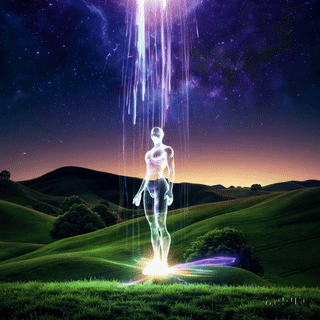
Took this selfie yesterday
“I think where we need to look now is to the same source that the people of the twelfth and thirteenth centuries did when their civilization was floundering: to the poets and artists,” writes Campbell. “These people can look past the broken symbols of the present and begin to forge new working images, images that are transparent to transcendence.”
Catchy isn’t it?
“Transparent to the transcendent.”
As we explored earlier, humans tend to converge their attention on the local, the temporal, and the immediate.
In the wise words of Alan Watts, everyone seems to be rushing around “in a great panic” trying to achieve something, but they aren’t quite sure what that thing is. Perhaps, we don’t realize that we are that thing, a.k.a. that mystic power in a body. This chasing of what we already are leads to what Watts calls the “intensely serious preoccupations and anxieties of mankind”.
As Alan says, “…although they are going around in this wildly ignorant pursuit, one of the funny things about it is that they don’t realize that there is a dimension, a sense, in which their pursuit is magnificent.”
That dimension where their pursuit is magnificent is the transcendent.
Whereas in the earthly dimension, they have convinced themselves that they are engaged in an intense struggle.
But as Alan Watts asserts, they are all “unknowing poets”.
So, what exactly does a poet do?
According to Campbell, “…the function of the poet is to deify the symbols and images around us, so as to connect the everyday to the eternal.”
In other words, your work as a poet is to encircle yourself in meaning.
Metaphorically, draw a circle of symbols and images around yourself. Then, you stand in the center.
Drawing a circle seems kind of easy, right? But what exactly are these symbols that we are supposed to put around us?
In the words of Carl Jung, a symbol is “the psychological mechanism for transforming energy”.
Symbols simmer like that old woman’s soup in your unconscious. They go to work on your psyche and somehow transform your understanding of the unexplainable. Then, off you go, penetrating deeper into the mystery of life.
A symbol, like every human being, has a story to tell. Symbols can talk to you, work on you, and guide you.
Contrary to a sign with a fixed meaning, symbols have a transcendent meaning. They point past themselves to something indescribable.
For example, a traffic STOP sign isn’t transparent to the transcendent. If it was, yogis would be blasting off into meditative bliss at the intersection and no soccer mom would ever get their kids to the game in time. As you can see, a STOP sign doesn’t tell you much about the mystery of life, does it? The meaning is fixed.
Compared to a sign, a symbol also functions as an external mirror of an internal process. It’s something outside of you that shines a light back inside of you.
If it seems absurd to look at life symbolically, you’re absolutely fucking right. It’s “normal” to look around you and metaphorically see nothing but a “Dead End” or “Not a Through Street” sign. It’s all too common to see life as material and mechanical.
But, according to Joseph Campbell, mythology begins where madness starts, and you aren’t worth talking to until something has driven you “spiritually mad”.
Symbols speak from and to the spirit, and are “in fact, the vehicles of communication between the deeper depths of our spiritual life and this relatively thin layer of consciousness by which we govern our daylight existences.”
If you decide to take away myth, though, you are left without an intercom between the transcendent and the immanent.
Therefore, it really doesn’t matter what symbols or images you arrange roundabout yourself.
The only thing that matters is that you open those fuckers up. Make those symbols transparent.
That way, when you look at manifestation, you see mystery pouring in from the other side, from every side.
Conversely, you thoroughly know now, humans tend to only worry about what is on this side of transcendence.
And understandably so. It’s hard as heck to wrap our minds around that which can’t really be spoken about—such as the eternal and the infinite. Most of us would rather focus on a cheeseburger or a Netflix episode than do the hard work of getting still inside, asking a confronting question about why we are alive, and then creating something meaningful from that.
So, the opportunity is to find that which our unconscious wants to meditate on and “reactivate the symbol, to bring it back to life, and to find what it means, to relate it to ourselves,” Campbell says.
Point your life to something indescribable.
To “that for which there is no other”.
Call it God, Source, Divine, Mystery, or whatever you like.
If you make your god transparent to the transcendent, it doesn’t matter what its name is.
But it does matter where you are.
Let me explain…
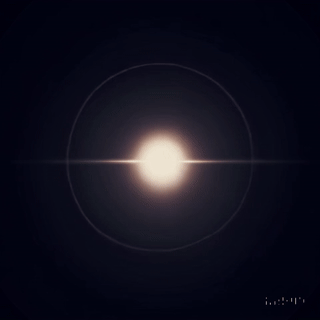
Are you the center of this whole thing?
Generally, organisms on Earth are driven by an irrepressible urge to go from “here” to “there”, or Point A to Point B. They are involved in a linear process.
But the truth is: nobody knows where “here” is. Sure, we are on Earth, in the Solar System, in the Milky Way, and ultimately in the universe. But where is all of that?
Human experience demands that you make up a “here”, so that you can get to the coveted “there”.
Otherwise, you are skipping a fundamental step.
Which brings up the next point. In which direction should you step?
If you are located in infinite blackness and vastness, who are you to decide which direction is up, down, left, or right? North, South, East, or West?
Some wise souls gave this answer a shot. Here’s how they saw it.
“God is a circle whose center is everywhere, and its circumference nowhere.”
What does this mean?
You are here at the center of a circle that never ends. You will always be there. If you take 10 steps forward, the center of the circle takes 10 steps forward with you.
You, as God, seem to have circled this place on a map for yourself. Always. (Hence why the Persian poet Hafiz penned this centuries ago: “This place where you are right now, God circled on a map for you.”)
“What the myth does,” Campbell explains, “is provide a field in which you can locate yourself. That’s the sense of the mandala, the sacred circle… The symbols are laid out around the circle, and you are to locate yourself in the center.”
Without a myth, Campbell asserts that life becomes scrambled, and you don’t know where you are or where to go. He compares it to living in a “labyrinth”, where people stubbornly battle their way through a maze, as if nobody has been there before.
Clearly, it’s not easy to build a life without myth.
Because myth helps you psychologically and spiritually locate yourself in the plot line of the big fat mystery, and choose which direction to go, especially in the face of inevitable problems and opportunities.
Remember in elementary school, you may have used a funky device called a compass to draw perfect circles and arcs on a blank piece of paper. It has two legs: one sharp point in the center of the paper, and one leg with a yellow Ticonderoga #2 pencil to perfectly trace the circumference.
In Campbell’s teachings, a myth is like that compass. It anchors one of your legs in the field of time (i.e., the material realm) and your other leg in the eternal (i.e., the transcendent realm). Or, one foot in the seen, one foot in the unseen.
It is a self-created structure that puts you in the center of mystery and draws a circle of meaning around you.
But why bother? If it sounds like child’s play, that’s because it is.
In Campbells’ conception, “people live by playing a game”. And mythology offers a field in which you can play a game of meaning.
Because, according to Campbell, life has no meaning. It simply is.
However, “each of us has meaning and we bring it to life.”
This begs the question…
What meaning are you bringing to life?
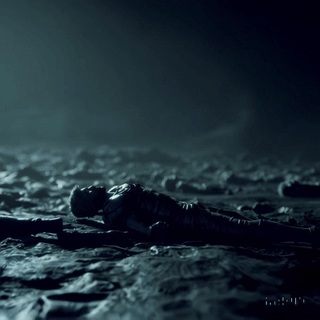
Meet The Great Spindle
This might be wonderful or dreadful to hear…
You are already bringing a myth to life, but you don’t realize it yet.
The Swiss philosopher Carl Jung shares his uncomfortable realization.
"I did not know I was living a myth or what sort of myth was ordering my life without my knowledge. I simply had to know what unconscious or preconscious myth was forming me. From what rhizome or root did I spring. I took it upon myself to get to know my myth, and regarded this as the task of tasks."
What is he saying?
As Campbell might joke, Jung went spiritually mad and became worth talking to.
Because Jung realized that his life sprang from the bedrock of his myth, it became the ”the task of tasks” to find out what story was guiding his life.
So what should you do? Scurry off and devours the myths of Hercules, Sisyphus, or Plato’s Cave? It wouldn’t hurt, but you’re missing the point….
Your life is a myth itself, as conveyed in this myth adapted from Michael Meade’s exceptional book Awakening the Soul: A Deep Response to a Troubled World.
Plato, the greek philosopher, recounted the Myth of Er, a tale about death, rebirth, and the paradox of remembering and forgetting.
It is not an epic story of a man slaying a dragon with a sword, but rather, an unusual report of an everyday man named Er, who was left for dead on a battlefield.
After spending days buried under rotting flesh, Er suddenly woke up in a land unknown to him.
Somehow, he journeyed to the center of the Earth, the “axis mundi” or world axis.
Er was instructed by the guides of the underworld to take it all in.
He was to carry back to humanity his understanding of the unborn in the underworld.
What did he see before him?
Souls were on a journey to reincarnate back on Earth.
Watching from what felt like the center of the cosmos, he was in awe as a great spindle pulled the universe in motion, just like yarn around a thread.
This cosmic spindle rested upon the knees of Ananke, the Goddess of Necessity.
Beside her sat her three daughters, also known as the Sisters of Fate.
Together, they sow the journey that each soul will take above ground, after their underworld rebirth.
Er watched in wonder.
The Sisters of Fate were chanting, dancing, and spinning the spindle that kept the cosmos humming.
Then, a guide appeared who escorted the souls one by one before the three sisters, where their incarnate fate would be determined.
But the guide adamantly pointed out to each soul: there is not assignment of fate, but rather of choice. And with choice, there is also the gift of genius. And with genius, there is uniqueness. And with uniqueness, there is destiny.
So, the guide brought each soul first before Lachesis, the first Sister of Fate, where each of the souls chose their fate—and thus their genius.
Then, they proceeded to the next of the three sisters.
Clotho, the second Sister of Fate, was known as “the spinner”. As each soul appeared before her, Clotho pulled into existence an invisible thread of genius that would secretly run through each soul’s human life. Finally, she twisted each thread to make their lives unique.
Lastly, the guide brought each soul before Atropos, the third Sister of Fate, whose name means, “she who cannot be turned”. Atropos further yanked this thread from Clotho, cementing each destiny as irreversible.
Then, each soul was warned to not look back. Genius chosen, thread woven, and door close-n.
It was now time for the next leg of their journey.
After traveling in scorching heat through a desert-like area, they arrived at a wide river called the Stream of Forgetfulness.
Each soul was obliged to drink a hearty cup of Forgetfulness, except Er. As soon as they did, their memory of the Goddess of Necessity and her three daughters was washed away in a mere moment.
They forgot about their gifts, uniqueness, and destiny.
Later that night, a thunderstorm and an earthquake erupted at the same time. These heavenly and earthly forces sent each soul into the world like a shooting star.
Their destination?
Their moment of Earth-birth, a soul entering its human body.
Just as abruptly as he found himself on the underworld, Er suddenly awoke again on the grounds of the planet.
Shockingly, he was laying on a pyre at his own funeral. His body was to be burned any moment.
However, Er did not drink from the Stream of Forgetfulness, so he quickly fulfilled his mission by passing on his remembering of his underworld journey.
Then, he was never heard from again.
So, does it matter if Er ever existed, or if three sacred sexy sisters helped your soul land in your body?
As Michael Meade says, “At issue is not whether we should believe such a tale. For, myths are not about believing; rather, they are vehicles for imagining.”
Meade also passionately asserts, “Each soul born bears a message trying to be remembered by its host in order to be delivered to the world. Each life is a mystery trying to be revealed, and the strange story of Er points at what the revelation is intended to be.”
We all have what he calls an “essential imagination and core pattern” that fine-tune our aim and destiny.
So, if we had the capacity to reactive that imagination that society beats out of us as we grow up, we might be able to see, as Meade suggests, that the purpose of life is to experiment with awakening to who we already are in the core of our being and remembering why we came to the planet in the first place.
Nature only makes originals.
Perhaps that’s why Campbell writes, “The privilege of a lifetime is being who you are”.
But, remember…
The problem, for now and for all time, is that our deepest self remains concealed within us and forgotten.
So, if we so desired, how could we live our myth?
How do we reveal who is within us?
Learn To Live By Your Own Myth
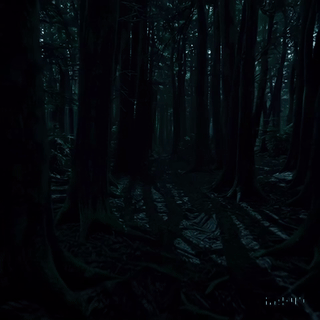
Chart your path into that dark forest, my friend.
Campbell implores us that “the individual must learn to live by his or her own myth”.
Let’s clarify that, though.
You don’t necessarily have to live by myths you read in a book, although that would be a wise thing to do.
And you don’t necessarily need to decide if you live in a friendly or hostile universe, although Einstein argues that this is the most important decision you must make.
This call to action is to see your own life as a myth.
To live as a myth.
And to become a “mythically inspired person”—someone who does NOT live “in the name of success or achievement in the world, but rather in the name of transcendence, letting the energy come through”, in Campbell’s words.
Clearly, mythically inspired people aren’t your average Joe’s.
Instead, they live in the name of the indescribable.
According to Campbell, they do not abide by Maslow’s hierarchy of survival, security, personal relationships, prestige, and self-development.
In fact, Campbell put on record that Maslow’s hierarchy of values seem “so strange” to him.
Why?
Because mythology transcends all of them.
“A person who is truly gripped by a calling, by a dedication, by a belief, by a zeal, will sacrifice his security, will sacrifice even his life, will sacrifice personal relationships, will sacrifice prestige, and will think nothing of personal development; he will give himself entirely to his myth.”
However, Campbell also warns you to not try to live your life too soon. You can’t outsmart your myth. You can’t predict it. You can’t force it.
Meaning, it is dangerous to rely on guru figures who supposedly know you better than you.
"You enter the forest at the darkest point, where there is no path.” Campbell says, “Where there is a way or path, it is someone else's path. You are not on your own path. If you follow someone else's way, you are not going to realize your own potential…”
“This thing, wisdom,” Campbell continues, “has to come gradually.”
The only way to know your path is to walk it, and you’ll find hard-earned wisdom with every step.
In Campbell’s eyes, going on that quest into the dark forest is not an ego trip.
Rather, “It is an adventure to bring into fulfillment your gift to the world, which is yourself… There’s nothing you can do that’s more important than being fulfilled. You become transparent to transcendence; in this way, you will find, live, and become a realization of your own personal myth.”
So, how do we know if we are actually on this adventure, becoming who we already are?
Campbell’s guidance might surprise you…
Bliss.
But this isn’t the kind of new age hippy yogi bliss, “Everything is love! Let’s bypass the rest!”
And this isn’t the blast-off bliss induced by a heroic psychedelic trip of 10 grams of Penis Envy mushrooms.
On the contrary, “Bliss is doing what you absolutely must do to be yourself.”
He adds, “Your bliss can guide you to that transcendent mystery. Bliss is the welling up of the energy of the transcendent wisdom within you. So when the bliss cuts off, you know that you’ve cut off the welling up. Try to find it again. And that will be your Hermes guide—the dog that can follow the invisible trail for you. And that’s the way it is. One works out one’s myth that way.”
Sniff the scent of your myth, track it, feel it, and live it.
That’s it.
That’s the work.
And you’ll know you are stalking that invisible trail when that mysterious energy bubbles up from within you to the surface of your psyche.
But this requires active participation. Myth is not a spectator sport.
Keep tilling the soil where soul can sprout.
As Campbell sees it, “Ritual is simply myth enacted; by participating in a rite, you are participating directly in the myth.”
So, now that you have a myth to live by—or better yet, a myth to live as—what rituals are going to keep transparent to the transcendent?
How will you keep the pipes clean and the mailbox open?
As Meade implied in the Myth of Er, there’s a part of you that remembers that you’ve forgotten. What a paradox that is…
This puts us smack dab in the middle of a game of hide and seek.
Campbell knows it, and so do you.
"Each individual is the center of a mythology of his own, of which his own intelligible character is the Incarnate God, so to say, whom his empirically questing consciousness is to find.”
Now you see who you are, now you don’t
Now you smell the path, now you don’t.
And that’s perfect.
Because nobody wants to play a fixed game. Nobody wants to watch a movie with that annoying friend who tells you what is going to happen next.
In other words, your myth doesn’t demand that you know how it ends, contrary to the desires of your frightened ego.
Your myth only demands that you know it has already started.
And that you pay attention to it.
It’s leaving you clues everywhere.
And it will take nothing short of your entire life for the story to be told.
This is “the real work and the genuine opus of our lives”, as Michael Meade puts it.
But it ain’t all sunshine, rainbows, and unicorn milk (rumor has it, the latter is very delicious).
At some point (and many points), life is going to hand you your own ass. Your world will crash down, as symbolized by the wise woman’s work of art in the cave.
That’s why Campbell asks us to hold up a honest mirror to our myth. When we face “great calamity” does our myth carry us through? Or does it flop and fail?
That is the “test of the underlying myth by which you live.”
All paths are available.
So, where do you want to go?
As one of my greatest teachers Paul Chek says, “God is the myth-maker that plays both sides, but chooses neither. The choice is always up to you.”
About The Author

This is real.
The photo says everything you need to know.
If You Have A Ridiculous Appetite For Reading, Then Read These Next
Who needs to hear this? Click the share button at the top of this article and/or send The Trippy Report to a friend (click here and copy/paste the URL).
Follow me on nowhere! Because I don’t do social media.
Reply to this email and let’s connect (but only if any of this resonates, percolates, reverberates, circulates, gestates, elevates, illuminates, permeates, activates, concentrates, stimulates, modulates, translates, oscillates, contemplates, or resuscitates, or any words that sound or feel similar to that)

